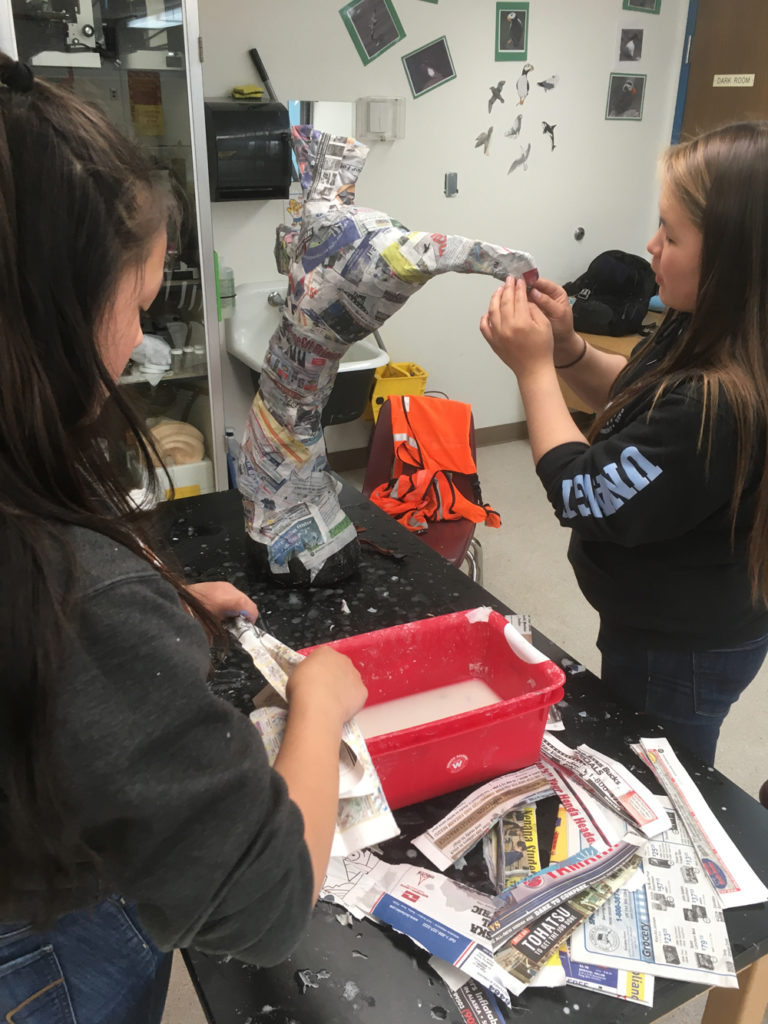Thursday (July 13th) was spent learning about seabird population counts being conducted on St. Paul Island.
Student intern, Destiny, and Ms. Kushin accompanied USFWS biologists Ryan Mong and Sarah Gilman along the beach under Zapadni cliffs. Ryan and Sarah showed us how the cliff length was broken into manageable sized cliff plots (A through S), reviewed distinctive characteristics of each bird species and armed with tally whackers, we joined in on making counts of the birds on the cliffs. Horned and Tufted Puffins, Northern Fulmars, Black-Legged Kittiwakes, and the lone Red-Legged Kittiwake were fairly easy to count, and our beginner numbers were spot on with the biologists’ numbers.

When it came to the Murres, well, that is a different story. Thick-Billed Murres, especially, were very numerous and often lined up together on ledges making those counts a bit more tricky! We found that the Common Murres usually were clumped together in amongst the Thick-Billed Murres, again making the identifying and counting of those trickier. With a bit more practice and careful spotting, Destiny’s counts were becoming more exact with the numbers Ryan and Sarah were getting.

As we carefully picked our way along the rubble beach, all the while on look out for seals possibly hauled out on the rocks, Ryan explained the history of the counts in the Pribilofs and how biologists use those counts to keep track of population trends in the birds. After the last plot, we hiked up to the top of the cliff for a walk back to the vehicle. It was noticeably windier up top, and that helped us understand why we had seen a stray feather floating up the cliff, not down. It will be interesting to see how this year’s count numbers compare with years past.

We had the help of 6 TDX youth hire workers for the afternoon as well. They helped with painting banners and making paper mache masks. We also read and talked about three letters from the Commander Islands students who will arrive on Monday night.



